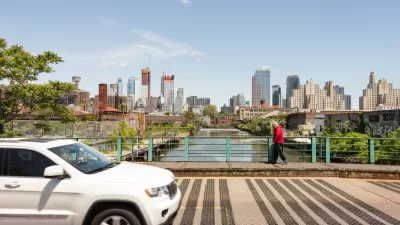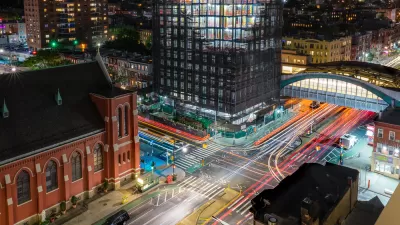A scathing critique of city planning, and the special interests that hold the system in thrall, in New York City.

Brad Lander and Antonio Reynoso write a strong critique of planning in New York City, arguing that the current system is ill-equipped to face the most pressing challenges of the contemporary city.
It’s clear that we need a better way to make infrastructure and land-use decisions that take climate change, affordability, and the challenges of growth seriously. Our piece-meal planning system is not up to the task.
Currently, the process of developing a capital plan to invest in our infrastructure constitutes just making a big list – a list that is in no way informed by plans for rezoning or development. How can we plan which neighborhoods should get resilient infrastructure like levees and seawalls when land-use and growth decisions are happening elsewhere? Shouldn’t we include capital budgeting for infrastructure like transit and schools as part of the process of planning for the new residential growth that will require it?
Meanwhile, New York City’s Uniform Land Use Review Procedure (ULURP) is a reactive, project-by-project process for considering changes – bereft of strategic vision, shared values, or a connection to long-term infrastructure planning.
The article also coins a new term for characterizing planning in the city, calling it a "REBNY vs. NIMBY Doom Loop." REBNY standing for Real Estate Board of New York, "who profit on each development, and therefore rarely worry about which ones make long-term sense for the public good," and NIMBY standing for Not In MY Back Yard, described as advocacy that "leaves no way to figure out where and how the growth we need to address the scale of the housing crisis should take place."
FULL STORY: Leaving the REBNY vs NIMBY Doom Loop

Study: Maui’s Plan to Convert Vacation Rentals to Long-Term Housing Could Cause Nearly $1 Billion Economic Loss
The plan would reduce visitor accommodation by 25,% resulting in 1,900 jobs lost.

North Texas Transit Leaders Tout Benefits of TOD for Growing Region
At a summit focused on transit-oriented development, policymakers discussed how North Texas’ expanded light rail system can serve as a tool for economic growth.

Alabama: Trump Terminates Settlements for Black Communities Harmed By Raw Sewage
Trump deemed the landmark civil rights agreement “illegal DEI and environmental justice policy.”

How Community Science Connects People, Parks, and Biodiversity
Community science engages people of all backgrounds in documenting local biodiversity, strengthening connections to nature, and contributing to global efforts like the City Nature Challenge to build a more inclusive and resilient future.

Alabama: Trump Terminates Settlements for Black Communities Harmed By Raw Sewage
Trump deemed the landmark civil rights agreement “illegal DEI and environmental justice policy.”

Dear Tesla Driver: “It’s not You, It’s Him.”
Amidst a booming bumper sticker industry, one writer offers solace to those asking, “Does this car make me look fascist?”
Urban Design for Planners 1: Software Tools
This six-course series explores essential urban design concepts using open source software and equips planners with the tools they need to participate fully in the urban design process.
Planning for Universal Design
Learn the tools for implementing Universal Design in planning regulations.
City of Santa Clarita
Ascent Environmental
Institute for Housing and Urban Development Studies (IHS)
City of Grandview
Harvard GSD Executive Education
Toledo-Lucas County Plan Commissions
Salt Lake City
NYU Wagner Graduate School of Public Service





























